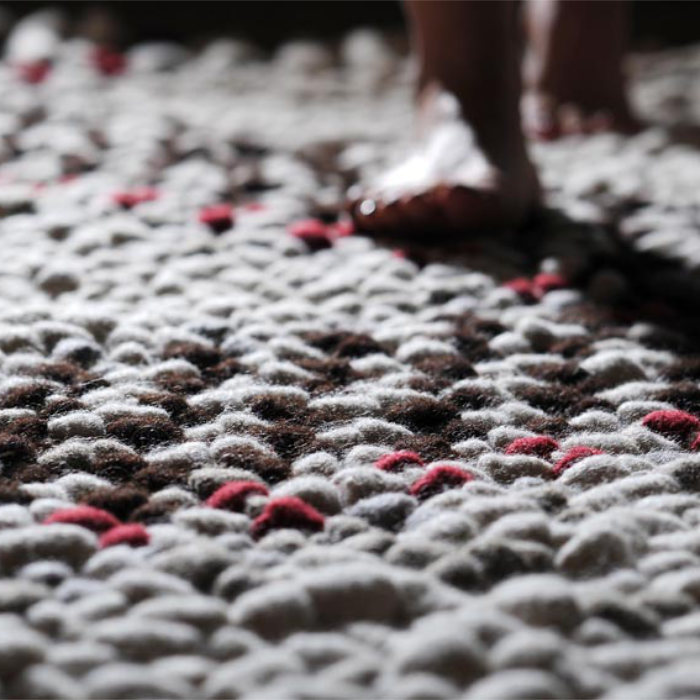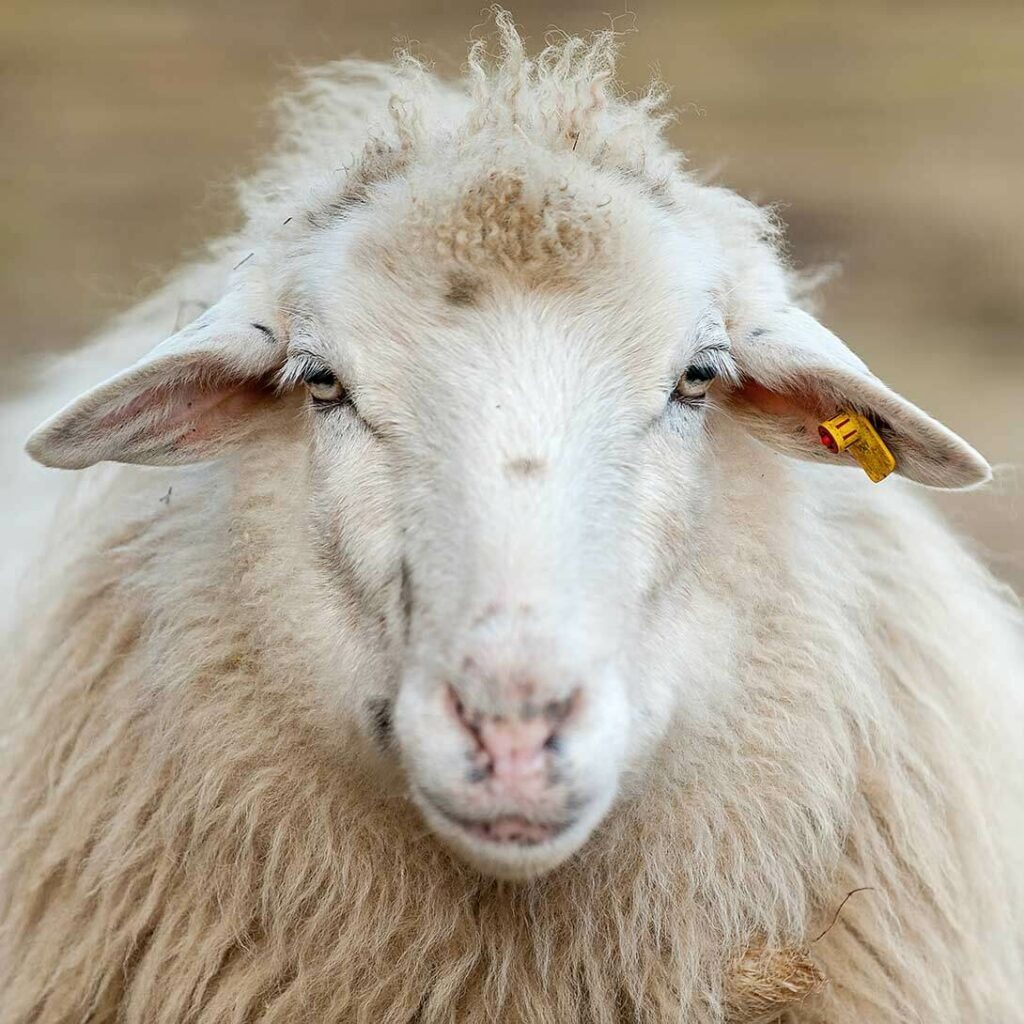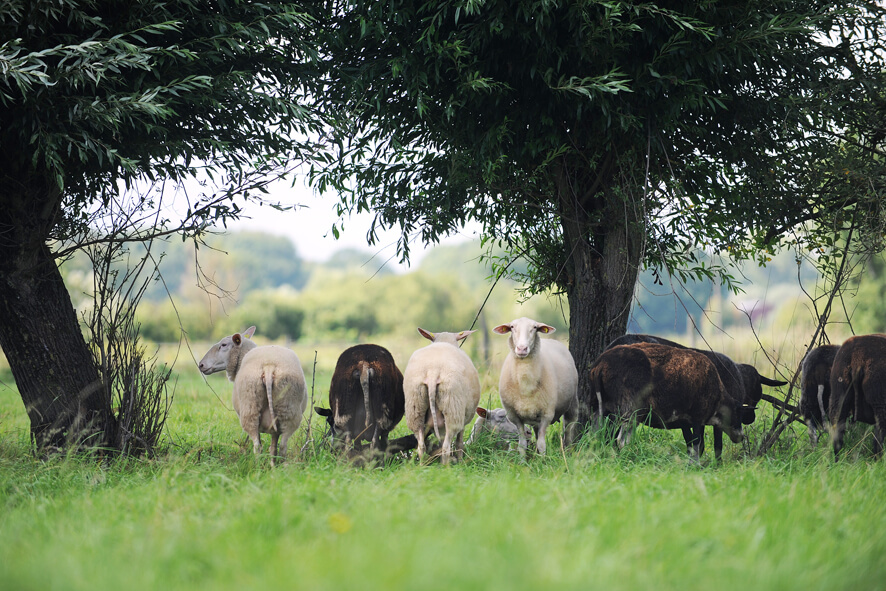
Why sheep's wool?
The very special structure of my carpets triggers a pleasant, massage-like feeling under the feet. The heavy carpets warm and radiate security. A home accessory that brings sensuality and strength to the room.
Part of the special properties is the material. The washed and combed wool is first felted. This is how the thick woolen strands from which the carpets are knotted are created. More than half of the sheep wool I process is undyed – just as it comes from the sheep.
Sheep wool provides a balanced living climate in the interior. It absorbs moisture and releases it again. It also improves the acoustics in a room due to its sound-absorbing properties. A renewable raw material that is sustainable, durable and compostable. A round thing for your home!
Wool - the super material
Wool is one of the oldest materials used for clothing. The thick tent-like woolen coats of the shepherds, who spent more time outdoors than indoors in those days, provide protection from many influences. Wool warms, envelops and also creates a cozy feeling in the interior. Wool makes my rugs more than an object. It is known that sheep’s wool warms, but in addition it absorbs and releases moisture from the air, so it pleasantly regulates the air in the room. Noise is also muffled, as the wool has a sound-absorbing effect. This is especially true for my carpets, as they can be up to 35 mm thick.
The special structure of the wool fiber and the lanolin (wool grease) that the sheep provide make them dirt-repellent, which is very beneficial for furnishing textiles.



Sustainable & Regional
Many of my works are made of natural-colored, undyed sheep’s wool. The variety of natural wool tones inspires me again and again. As this wool is neither bleached nor dyed, several production steps are eliminated and it remains fully compostable.
I prefer wool from the region and Germany, but I also use materials from neighboring countries such as Holland or Scandinavia. My aim is to source the wool as locally as possible – ideally from sheep that I can visit myself. I am particularly fond of old sheep breeds such as the Pomeranian Landschaf, Skudde, Coburger Fuchs and Moorschnucke, many of which are on the Red List.
Unfortunately, a lot of wool is still disposed of because there are too few buyers. I’m working on getting more wool into circulation! I have production leftovers processed into wool balls in a combing plant in Wendland, which are given a second life as cushion filling in my inlays.
In addition to sustainable processing, the sheep themselves are also important to me. I attach great importance to where my wool comes from and only use mulesing-free wool.
Animal Welfare
For my products, in addition to the whole process to the product, the sheep are very important to me. I was able to get to know some of the sheep whose wool I process. That’s the ideal situation for me, and of course it doesn’t always work out. I pay attention to where my wool comes from and that everything I process is mulesing free.
